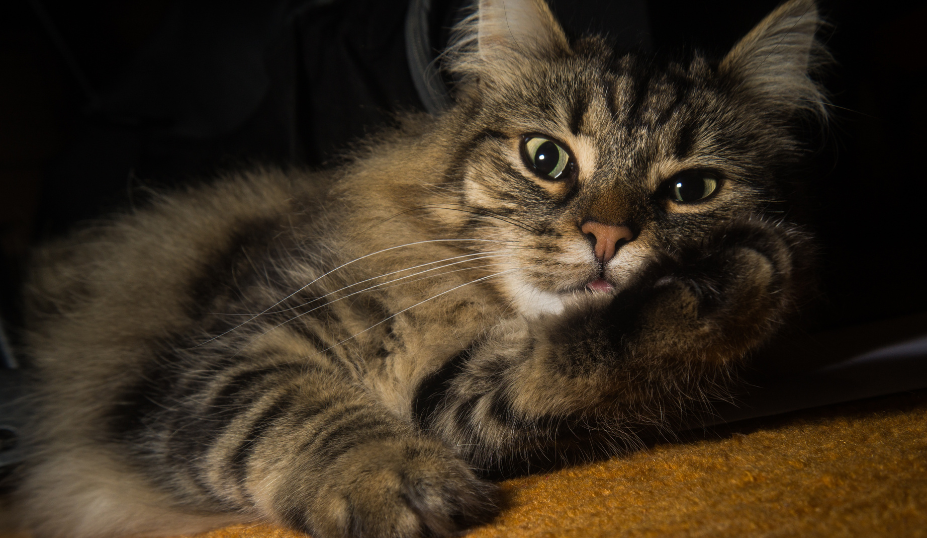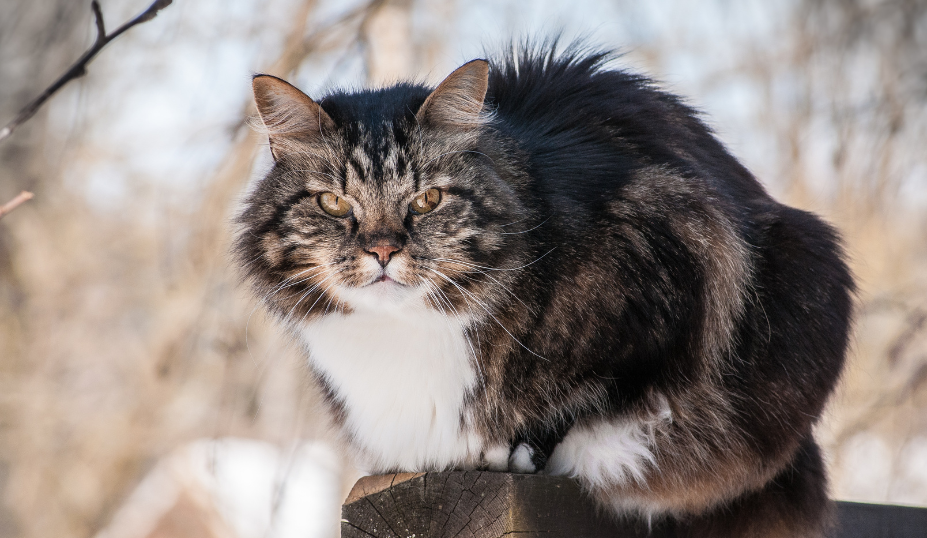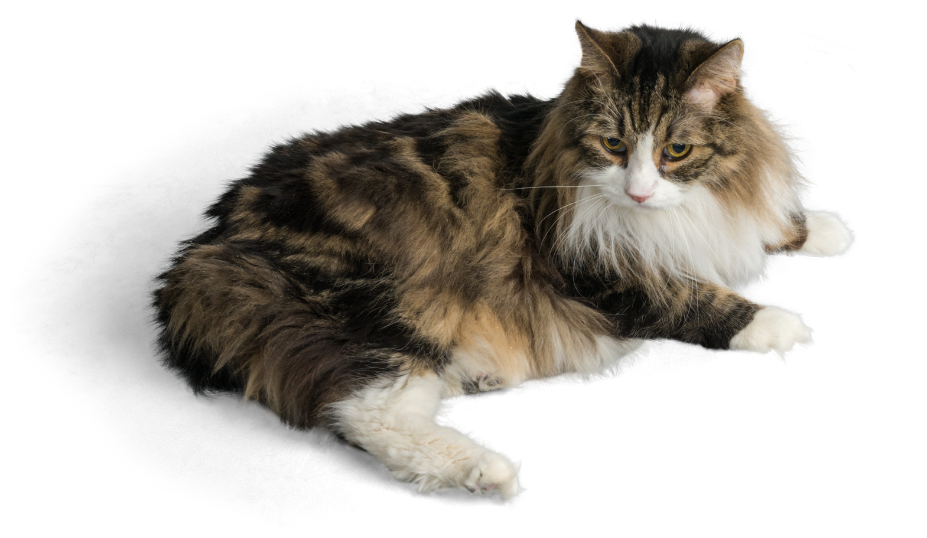The Fascinating World of Norwegian Forest Cat Tabby Mix: Traits, Care, and Health
Dive into the captivating world of the Norwegian Forest Cat Tabby Mix, a breed that combines the rugged charm of the Norwegian Forest Cat with the distinctive markings of the Tabby. Understanding the unique characteristics, care needs, and potential health issues of this breed is crucial for any potential or current owner.
This breed, affectionately known as the "Wegie," is renowned for its sociable yet independent nature, excellent climbing skills, and love for hunting. Their distinctive tabby patterns and colors, coupled with their dense, water-resistant coat, make them a sight to behold.
However, owning a Norwegian Forest Cat Tabby Mix is not just about admiring their physical beauty. It's about understanding their dietary needs, grooming requirements, and potential health risks. These cats need a diet high in protein and regular grooming to maintain their thick, fluffy coats.
They are generally healthy but can be susceptible to certain hereditary problems like Hypertrophic Cardiomyopathy (HCM), Hip Dysplasia, and Glycogen Storage Disease type IV (GSD IV).
By understanding these aspects, you can ensure a healthy, fulfilling life for your feline friend. So, whether you're considering adopting a Norwegian Forest Cat Tabby Mix or simply need to learn more about this fascinating mix, this guide will provide you with the necessary information you need.
Understanding the Norwegian Forest Cat Tabby Mix
The Norwegian Forest Cat, affectionately known as "Wegie," is a breed known for its majestic appearance and friendly, adaptable temperament. A robust, muscular body, large triangular ears with tufts similar to a lynx, and large, almond-shaped eyes in shades of green, gold, or copper characterize this breed. These features combine to give the breed an elegant and powerful look.
The Norwegian Forest Cat, celebrated for its striking features and charming personality, stands out with its long, dense fur, showcasing a double-layered coat designed for resilience against harsh climates. This exquisite breed exhibits a variety of colors and patterns, reflecting its natural adaptation to diverse environments. Common hues include black, white, blue, red, cream, and silver, displayed in solid, tabby, or tortoiseshell patterns.
Tabby Patterns:
Among the array of patterns, the tabby pattern is a hallmark of Norwegian Forest Cats. Classic tabbies boast distinct markings, such as the iconic "M" shape on the forehead, graceful swirls on the cheeks, and a prominent black line down the back. Tails adorned with rings and butterfly markings on the shoulders, along with symmetrical flank patterns and two rows of button markings on the chest and belly, contribute to the breed's exquisite appearance.
Temperament:
Beyond their captivating aesthetics, Norwegian Forest Cats are renowned for their calm and gentle temperament. Their friendly and intelligent nature makes them a delightful addition to any household. Notably adaptable, these felines form strong bonds with their owners, displaying loyalty and affection by following them throughout the home. Sociable by nature, they thrive in lively households, preferring retreat to quiet spaces when overwhelmed rather than resorting to aggression.
Physical Traits:

Physical prowess defines the Norwegian Forest Cat, embodying qualities of an avid hunter and an excellent climber. Their remarkably strong claws enable them to navigate heights with ease, often seeking elevated vantage points for observation. Surprisingly, these felines exhibit a unique trait—enthusiasm for water. If your tabby companion displays a penchant for running water or attempts to join you in the shower, it could be a nod to their Norwegian Forest Cat lineage.
In essence, the Norwegian Forest Cat combines elegance and functionality, with its distinctive coat patterns and amiable temperament. Whether scaling heights, chasing prey, or enjoying a water play session, these felines bring a touch of enchantment to the homes they grace.
Caring for a Norwegian Forest Cat Tabby Mix
Caring for a Norwegian Forest Cat Tabby Mix requires a balance of proper grooming, a well-balanced diet, and adequate mental and physical stimulation.
Grooming Requirements and Tips
Norwegian Forest Cats, also known as "Wegies," have thick double coats that are heavily insulated during winter and shed excessively in the spring. Despite their long fur, they are surprisingly low maintenance and require grooming once or twice a week using a steel comb or a wire bristle brush.
It's important to start grooming routines early, especially with kittens, to help them adjust and enjoy the process. For older cats, it may take a bit longer to get used to grooming, but it's equally beneficial. During the spring, when shedding is at its peak, increase the frequency of your grooming sessions to prevent loose fur from building up in their coat.
Dietary Needs and Feeding Recommendations
A Norwegian Forest Cat Tabby Mix requires a diet rich in animal protein and fat. At least 50% of their diet should consist of meat and fish, and up to 20% should be animal fat. Cats also need vitamins A, B complex, D, E, and a broad spectrum of minerals in their diet. The best sources of these vitamins are liver and fish for vitamin A, meat and liver for vitamin B complex, liver, kidney, and fish oil for vitamin D, and wheat germ oil and liver for vitamin E.
It's important to monitor their food intake and reduce portions if necessary to maintain a healthy weight. Treats should make up no more than 10% of a cat's daily calories.
Importance of Mental and Physical Stimulation

Norwegian Forest Cats are smart and like to spend time with their owners, making them excellent candidates for training sessions. They are active cats that enjoy a range of enrichment options, including climbing trees, elevated platforms, and interactive toys.
Toys that encourage climbing and exploring are ideal for these cats. Consider investing in a feline tree or scratching post, as well as interactive toys such as puzzle feeders or laser pointers. It's also important to rotate your cat’s toys regularly to keep them engaged and interested. Training using positive reinforcement and having some of your cat’s favorite treats and toys to use as rewards is a great approach to motivate your cat and keep them engaged while training.
Health Considerations for Norwegian Forest Cat Tabby Mix
The Norwegian Forest Cat, affectionately known as the "Wegie," is a breed known for its rugged looks, muscular bodies, and overall resilience. Despite their robust nature, these cats, like any other cat breed, are susceptible to some health issues, both hereditary and lifestyle-related. The most common health problems in Norwegian Forest Cats include Hypertrophic Cardiomyopathy (HCM), Hip Dysplasia, and Glycogen Storage Disease Type IV (GSD IV).
HCM is a condition that causes the heart wall muscle to thicken, affecting the organ's ability to pump blood effectively. Hip Dysplasia is a malformation of the hip joint that will lead to arthritis and lameness. GSD IV is a metabolic disorder that impairs the ability to metabolize glycogen, leading to organ dysfunction.
Regular vet check-ups are crucial for early detection and management of these conditions. When diagnosed early, these conditions can be managed with a controlled diet and adequate medication. Obesity is a risk factor for these diseases, so portion control and high-quality food are essential.
Maintaining a healthy lifestyle for your Norwegian Forest Cat involves a balanced diet, regular exercise, and mental stimulation. Feed your cat two measured meals per day to prevent overfeeding and obesity. Treats should not exceed 5% of your cat's total daily calories. Regular dental care is also important for overall health.
Exercise is crucial for these cats, who are natural climbers and hunters. Provide them with climbing trees, scratching posts, and toys to keep them active. Regular play sessions can also help prevent obesity and related health issues
Training and Socialization
Training a Norwegian Forest Cat, or any feline companion, demands the careful orchestration of consistency and patience, recognizing the unique traits of these majestic creatures. Consistency becomes the cornerstone of success in shaping behaviors, while positive reinforcement serves as the motivational melody that guides their training journey.
Positive Reinforcement:

The heart of effective cat training lies in positive reinforcement. This technique involves rewarding desired behaviors, encouraging their repetition. For instance, if your Norwegian Forest Cat chooses the scratching post over the sofa, a treat or praise serves as a powerful reinforcement. The more you associate positive outcomes with specific actions, the more likely your cat is to repeat those actions. This positive cycle builds a strong foundation for a well-behaved and responsive feline friend.
Early Socialization:
Early socialization is a melody that resonates profoundly with Norwegian Forest Cats. Recognizing their highly curious and adventurous nature, exposing them to various environments, children, and other pets during their kittenhood establishes the groundwork for well-adjusted and sociable adult cats. Forming loyal bonds during this critical phase ensures harmonious interactions within the household.
In the symphony of training a Norwegian Forest Cat, remember that patience is the conductor that brings everything together. Understanding their individuality, respecting their instincts, and celebrating their successes contribute to a harmonious relationship between you and your majestic feline companion.
FAQs
What are the physical traits of a Norwegian Forest Cat Tabby Mix?
Norwegian Forest Cats are large cats with sturdy, well-balanced, and muscular bodies. They have a thick double fur having a dense undercoat and long, glossy, water-resistant topcoat. Their eyes are generally shades of green, gold, or copper. They come in most colors and patterns, including white, black, blue, silver, tortoiseshell, bi-color, calico, and tabby.
How is the personality of a Norwegian Forest Cat Tabby Mix?
Norwegian Forest Cats are known for their easy-going nature. They are an adaptable cat breed that does great with other dogs and other pets, and kids. These athletic felines prefer to view the world from a high perch. They are curious, playful, and even-tempered, making them great companions for families with children
Conclusion
The Norwegian Forest Cat Tabby Mix, affectionately known as the "Wegie," is a breed that captivates with its unique traits, care needs, and health considerations. From their majestic appearance and friendly temperament to their distinctive tabby patterns and robust health, these cats are truly a breed apart. They need a balanced diet, regular grooming, as well as a lot of mental and physical stimulation to thrive.
Owning a Norwegian Forest Cat Tabby Mix is a joy and a responsibility. It's about understanding their needs and providing them with a loving, stimulating environment. It's about regular vet visits and early detection of potential health issues. But above all, it's about sharing your life with a loyal, intelligent, and beautiful feline companion.
In conclusion, whether you're considering adopting a Norwegian Forest Cat Tabby Mix or simply want to learn more about this fascinating breed, we hope this guide has provided you with the essential information you need. Keep in mind, every cat is unique, and understanding their individual needs is the key to a happy and healthy life together.







